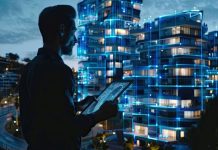Modern efficient cities are evolving faster than ever, and much of that momentum comes from the quiet partnership between clean energy and emerging technology. Electric transit, smart infrastructure, connected streets, and AI-driven mobility systems are helping cities move more people with less congestion, cleaner air, and greater efficiency.
These innovations don’t just make travel easier, they shape how millions of people live, work, and interact with their surroundings every day. And as technology continues to advance, it’s natural to wonder: how far can cleaner, smarter mobility push the cities of tomorrow?
Key Takeaways
- Modern cities embrace clean energy and technology to enhance mobility and reduce congestion.
- Electric rides, such as buses and trams, decrease emissions and improve commuting experiences.
- Micro-mobility options like e-bikes and scooters provide convenient alternatives for short trips.
- Connected infrastructure, including smart traffic lights and power grids, optimizes urban travel and energy use.
- Autonomous vehicles and AI planning apps are shaping the future of city mobility, making travel more efficient.
Table of contents
How Clean Energy Is Changing the Way We Move Around Cities
Electric Rides Are Becoming the New Normal
Electric transportation is quickly reshaping city travel because it solves several problems at once: it cuts emissions, reduces noise, and offers a smoother commute for everyday riders. Modern electric buses and trams now run longer routes thanks to better batteries, and many cities are adding fast-charging hubs that recharge vehicles in minutes instead of hours.
Some areas are even testing wireless charging built directly into the road surface, allowing EVs to top up while moving. As these systems expand, cities benefit from cleaner air, quieter streets, and lower long-term operating costs, which is why electrification is becoming a practical foundation for urban mobility rather than a futuristic idea.
E-Bikes, Scooters, and the “Smart” Last Mile
Tech-powered micro-mobility options like e-bikes and scooters have changed how people handle short trips, especially in crowded urban areas where driving isn’t always practical. These devices are connected through apps that show battery levels, availability, and safe parking zones, and citywide GPS systems help keep fleets organized and reduce clutter on sidewalks.
Because they’re lightweight, affordable, and easy to use, they fill a critical gap by helping commuters reach transit stations without relying on cars. For many people, this blend of convenience and low environmental impact makes micro-mobility a natural part of their daily routine.
Hydrogen and Low-Carbon Fuels for the Heavy Lifting
While electric options work well for cars and buses, heavier vehicles need something more powerful, which is why efficient cities are beginning to explore hydrogen and other low-carbon fuels. Hydrogen buses and delivery trucks can refuel quickly and travel long distances, making them ideal for demanding routes that would drain battery-electric vehicles.
Recent advancements like cleaner hydrogen production and safer storage systems are making the technology more realistic and cost-effective for large fleets. Instead of replacing electric solutions, hydrogen complements them by handling the heavy-duty work, giving cities a broader, more flexible toolkit for reducing emissions across their transportation networks.
The Smart Tech Running Behind the Scenes of Every Great, Efficient City
Traffic Lights That Think for Themselves
Cities are increasingly relying on AI-powered traffic systems that adjust signals based on real-time conditions rather than fixed timers, which helps reduce congestion during rush hour and keeps intersections moving more efficiently. These systems use sensors, cameras, and predictive algorithms to detect trends, like unexpected bottlenecks or heavier pedestrian activity, and respond instantly.
By adapting to what’s actually happening on the road, smart traffic lights can shorten travel times, ease stress for commuters, and make streets safer for everyone. It’s a simple change on the surface, but it has a measurable impact on how smoothly a city functions.
Streets, Lights, and Roads That Can “Talk”
Connected infrastructure is becoming a core part of modern urban life, with streetlights, crosswalks, and even the pavement itself equipped with IoT sensors that monitor activity around the clock. Smart streetlights adjust brightness to save energy when roads are quiet, while embedded road sensors track temperature, vehicle volume, and pavement wear to help crews address issues before they turn into expensive repairs.
These systems also support emerging vehicle-to-infrastructure communication, giving cars real-time information about hazards or changing conditions. Altogether, this network of “talking” infrastructure helps cities stay safer, more efficient, and better prepared for future technologies like widespread autonomous driving.
Smarter Grids Keeping the Power On
Behind every clean-energy system is a smart grid that constantly balances supply and demand, especially as more cities rely on solar and wind power that fluctuate throughout the day. Modern grids use automated switches, real-time monitoring, and distributed energy sources, like rooftop solar, community batteries, and microgrids, to keep electricity stable even when demand spikes.
Large energy storage systems capture excess renewable power during peak production and release it when the grid needs support, reducing the risk of outages. Advanced grids also rely on utility-scale battery storage, smart inverters that stabilize voltage, and modern compressor control systems used in HVAC and industrial equipment, all working together to reduce energy spikes in real time and ease stress on the grid during high-demand periods.
Autonomous Tech and AI: The Future of City Mobility
Driverless Shuttles Are Already Rolling Out
Autonomous shuttles are becoming a practical way for cities to move people through busy districts, campuses, and tourist areas without relying on traditional cars. These low-speed vehicles follow pre-mapped routes, use sensors and cameras to navigate safely, and offer a reliable option for short, frequent trips.
They’re especially helpful in areas where traffic moves slowly anyway, so why not let a small, efficient shuttle handle the work? Because they run on clean energy and operate with consistent driving patterns, they also reduce emissions and improve safety, making them a natural step toward more automated transportation networks.
AI Planning Your Commute Before You Even Leave
AI-powered mobility apps are changing the way people get around by combining buses, trains, bikes, scooters, and walking routes into one seamless plan. These tools analyze traffic patterns, public transit schedules, and real-time conditions to help commuters choose the fastest and most efficient option, something that would be nearly impossible to figure out manually during peak hours.
The same technology helps cities predict when certain routes will be crowded and adjust service before problems develop. Wouldn’t most commuters prefer a system that feels like it’s working with them instead of against them? AI is making that experience more common.
What’s Still Too Early to Expect from Self-Driving Tech
While autonomous technology is improving fast, fully self-driving taxis and personal vehicles are still limited by regulatory hurdles, unpredictable weather, complex urban environments, and the need for highly detailed mapping. Today’s systems handle controlled routes well, but throw in heavy rain, construction detours, or dense pedestrian traffic, and the technology still struggles.
This doesn’t mean progress is slow, only that turning an entire city into a fully autonomous zone takes more than advanced software. It requires upgraded infrastructure, clearer rules, and breakthroughs in sensor reliability. The promise is exciting, but it’s worth asking: which parts of the future are ready now, and which ones need a little more time?
Conclusion
The shift toward clean energy and intelligent technology is redefining the way cities function, creating transportation systems that are faster, safer, and more efficient. From autonomous shuttles and smart grids to micro-mobility and connected infrastructure, these tools are helping urban areas grow without sacrificing air quality or livability.
Modern and efficient cities that embrace these innovations will be better equipped to handle rising populations, extreme weather, and the growing demand for efficient movement. The progress is already visible, but the bigger question is: what new possibilities will open up as cleaner power and smarter ideas continue to reshape urban life?











